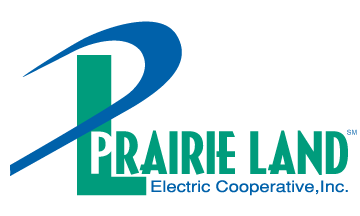This content was featured in the August 2023 issue of Kansas Country Living.
I was recently asked by a long-time member about what impacts electricity prices. We talked about how the daily cost of living seems to have increased across the board.
Just as inflation has impacted everything from the price of gasoline to the price of eggs, costs for the fuels required to produce electricity have also risen. This is a timely topic, so I wanted to help explain some of the factors that impact electricity prices (and energy bills) in this month’s issue of Kansas Country Living.
While there is no short answer, there are a few key elements that impact electricity prices and rates. Some of these factors Prairie Land Electric can manage, some of them you can impact and other factors are beyond our control. So, let me break it down.
There are three primary parts to a monthly residential electric bill: a service access charge, an energy charge (kWh) and a Power Cost Adjustment (PCA). To understand your total energy costs and what impacts your bill, lets unpack one piece at a time.
The first is a fixed monthly service access charge, which covers the costs associated with providing electricity to your home. This includes equipment, materials, labor and operating costs necessary to serve each meter in Prairie Land Electric’s service territory, regardless of the amount of energy used. To ensure the reliable service you expect and deserve, we must maintain the local system, including power lines, substations and other necessary equipment. Like many other businesses, we’ve experienced supply chain issues and steep cost increases for some of our basic equipment. For example, the cost for a distribution transformer (which looks like a tall metal can at the top of a power pole) went from $741 in 2021 to $1524 this year, and wait times to receive these essential components are up to six months. Because we are a not-for-profit cooperative, some of these expenses must be passed on to our members. I should note that the service access charge is the same for everyone in each rate class and the costs are shared equally across the membership.
Another component of your monthly bill is the kWh energy charge, which covers how much energy you consume. You’ve likely noticed the amount of energy you use can vary from month to month and is typically impacted by fluctuating temperatures. When temperatures go up or down, your cooling and heating equipment run longer, which increases your home energy use. Regardless, energy consumption is an area that you have some control over, and you can lower your monthly bill by actively reducing energy use. Your thermostat is a great place to start, so be sure to keep it close to 78 degrees during summer months.
The last component of your bill is the PCA, which is the same amount for all co-op members. The PCA varies in correlation with power costs, which means the electricity that Prairie Land Electric purchases from Sunflower Electric Power Corporation, our wholesale provider, can vary from month to month. The PCA covers power cost fluctuations without having to continually restructure electricity rates.
I hope this information sheds light on some of the factors that impact electricity prices. While we can’t control the weather or the rising costs of energy and equipment, please know Prairie Land Electric is doing everything possible to keep internal costs down.
We’re here to help you, too. Contact us if you have questions about your energy bill or for advice on how to save energy at home.
